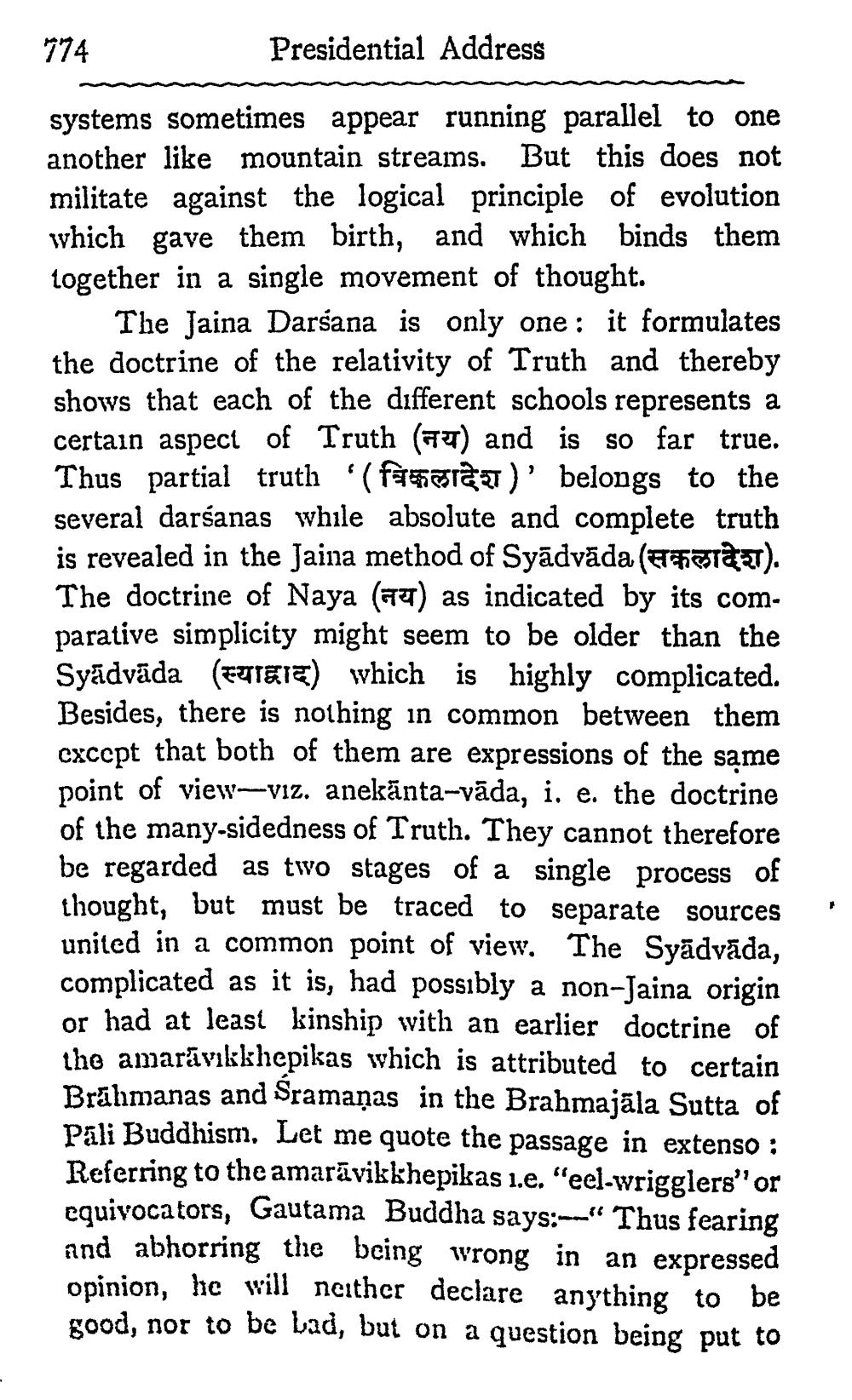________________
774
Presidential Address
the docte Jaina Darsa movement of which bindsolution
systems sometimes appear running parallel to one another like mountain streams. But this does not militate against the logical principle of evolution which gave them birth, and which binds them logether in a single movement of thought.
The Jaina Darsana is only one: it formulates the doctrine of the relativity of Truth and thereby shows that each of the different schools represents a certain aspect of Truth (at) and is so far true. Thus partial truth (
f iĉT)' belongs to the several darśanas while absolute and complete truth is revealed in the Jaina method of Syadvada (सकलादेश). The doctrine of Naya (42) as indicated by its comparative simplicity might seem to be older than the Syadvāda (ETTERT) which is highly complicated. Besides, there is nothing in common between them cxccpt that both of them are expressions of the same point of view~-viz. anekānta-vāda, i. e. the doctrine of the many-sidedness of Truth. They cannot therefore be regarded as two stages of a single process of thought, but must be traced to separate sources united in a common point of view. The Syādvāda, complicated as it is, had possibly a non-Jaina origin or had at least kinship with an earlier doctrine of the amarāvikkhepikas which is attributed to certain Brahmanas and Sramaņas in the Brahmajāla Sutta of Pali Buddhism. Let me quote the passage in extenso : Referring to the amarāvikkhepikas 1.e."eel-wrigglers" or equivocators, Gautama Buddha says:--" Thus fearing and abhorring the being wrong in an expressed opinion, he will neither declare anything to be good, nor to be bad, but on a question being put to




